Newsletter 2
![]()
WATER
THE ESSENCE OF LIFE
Newsletter No. 2
We are now starting our second year of Water; the essence of Life. On the whole the first year was a great success. It climaxed with the Cultural Festival at St. Margarets, which was without doubt one of the highlights of last year. I´m sure I speak for all the schools involved in the project when I thank the staff and students at St. Margarets for all the work they put into the Festival. Now that the second year has started I would like to welcome on behalf of the original six, a new partner school in the project; H. Harthandelsinstituut from Flanders in Belgium.
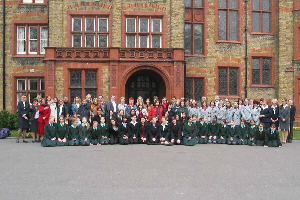
This newsletter is mainly about the last school year, but also a little has been added from this school year. I expect to publish a further newsletter in April 2004, mainly about the student exchanges taking place over the next months. I would like receive news from all of you about the exchanges and other events that you want to talk about.
Gudjon Ó. Magnússon
St. Margaret’s School
Undaunted by terrorist scares and the beginning of the war in Iraq, our friends from schools in Germany, Hungary, Iceland and Romania braved the security delays at Heathrow Airport and arrived at St Margaret’s on Thursday 27th March for the Socrates Art and Music Festival organised by Mrs S Hudson with help from Mrs E Jarvis. For those whose first visit it was, there was an intake of breath as they turned into the drive and saw the school, the covered way and the orchard. They could not believe that such a beautiful place was a school.
Water Music Concert
This was the culmination of weeks of hard work by Mr I Hope who directed the orchestra and the combined choirs of St Margaret’s and three local churches, together with some of our European guests in a superb programme of music with items linked by the theme of Water. We were delighted that parents, former parents, old girls, members of staff and friends joined the massed choir and the orchestra, as well as music staff and students from the European schools. The programme contained music by Debussy, Elgar, Chopin and Handel.
Much of the final rehearsing, of course, could only take place on the day of the concert itself and the school was a frenzy of musical activity. The first half of the concert took place in the School Hall and ended with Handel’s Water Music. After the interval Mr Hope chose to move the venue to the School Chapel for Vivaldi’s Gloria. This was a most successful decision as the sound of the voices and instruments seemed more resonant and warm in the more intimate environment. The audience was spellbound at a most beautiful performance and echoed the thanks of the Headmistress to Mr Hope and the musicians for a superb evening.
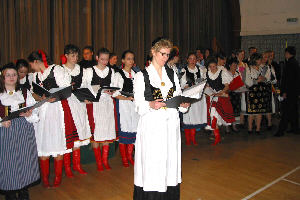
International Concert
On the next evening the mood was lighter with singers, dancers and solo instrumentalists producing entertainment characteristic of their country or school. The Romanians performed a shadow puppet play; the Hungarians sang folk songs and danced; the Icelanders sang and played the flute; the Germans sang a long song composed by their own music teacher and St Margaret’s performed Spanish, Indian and Chinese pieces.
After the concert, everyone moved into the Dining Room for an International Food Tasting. A most enjoyable time was had sampling Icelandic seafood including shark, German cheesecake made that day by German and English students, delicious Hungarian hand-made chocolates and jam and cream scones from the UK.
Art and Photographic Competition
Each visiting school brought with them their best photographs and art work on the theme of Water. These were displayed in the Casson Centre and judged by Mrs Lusher from St Margaret’s and Mr Stuart Todhunter from Haberdashers’ Boys’ School. The winners were:
For the Art Competition: Romania (11 – 15 years)
United Kingdom, Bonnie Friend (16 – 18 years)
For the Photographic Competition: United Kingdom, Ekta Vekaria (11 – 15 years)
Best set of photographs: Germany (19 and over)
We are most grateful to Marks and Spencer who provided splendid prizes for the competition and plenty of bottled water for the weekend.
Hosts
We could not have had such a successful visit without the help of those families who hosted our European guests. Many of the young visitors were overwhelmed and delighted by the welcome and hospitality they received. Thank you very much to everyone involved and to those who wrote to say how much they had enjoyed the long weekend.
Water Tasting
During the visit Mr Hall and the Science Department organised a water tasting competition. Schools had been asked to bring some tap water and some bottled water from their own country. Any labels were removed and girls from all years, visitors and staff paid 10p for charity to sample the water and try to distinguish between them.
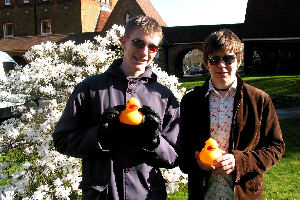
Not surprisingly, since most of the tasters were from St Margaret’s, the English water was voted the best tasting of all the samples. However, the German visitors proved to be best at distinguishing between bottled and tap water. Winners here were Jessica Jakob, Rafaela Gassmann and Benjamin Hartmann from Urspringschule with Eszter Nyiri from Hungary also winning a tasting prize.
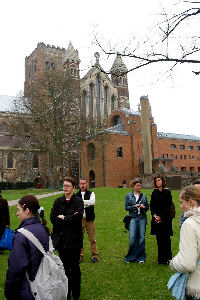
In the bridge building competition also organised by the Science Department, the winners were from Xantus Janos school in Budapest, Hungary, followed by Breidholt College in Reykjavik, Iceland, in second place and the Adam Muller Guttenbrunn college in Arad, Romania.
Money raised for WaterAid
By the end of the visit of our Socrates partner schools we had raised £1,280 for WaterAid.
Xántus János School
Another Comenius Project ……..?
2001 was the final year of our previous project entitled "European Cultural Panorama" made by St. Margaret’s School, Urspringschule and Xántus János School. It meant three years of joint work, good fun, community spirit and life –long friendships. And then it was coming to its end. We were sitting in the enormous park of St. Margaret’s School watching our pupils enjoy themselves at the farewell party " What a great success it was!" "No, it can’t be over! Not now! Not here!" – We thought. -"Let’s carry on cooperation! How nice it would be to have some new partners and begin something new!" And so did we!
We started to look for new participants. To my greatest surprise, it went like clockwork and we greeted our new partners: Fjolbrautaskolinn Breidholti, Reykjavik, Liceul Teoretic „Adam Müller Guttenbrunn", Arad, Göteborgs Högre Samskola.
The participants come from far-away countries in Europe, totally different types of schools with various customs and traditions. It is amazing; how easily we have found shared interests and the common points, despite our different life- and work-styles.
The heads and the project co-ordinators met in Reykjavik to plan the joint work. We divided the tasks and got down to our assignments. Our project culminated in the "Water Festival" held at St. Margaret’s School, in Bushey, in March 2003.
In the months leading up to the special week in Great Britain various preparations were made. In each school Socrates Boards introduced the participants of the project, a huge advertising campaign was launched, which encouraged our students to produce art works related to water, join the school choir and learn "water songs" etc.
I was amazed at our students’ enthusiasm. Plenty of project work was done, therefore we had to select very carefully those students and art works which stood the chance to represent our school at the Festival in England. I could feel the excitement throughout the school. Sometimes I found myself surrounded with students and fellow-teachers who asked me how work was going and crossed their fingers for us. We could feel the whole school supported us. The "Water Festival" became important for everyone. We spent thousands of hours rehearsing the Hungarian songs and dances. Our dance and music teachers were merciless perfectionists and made us show our best.
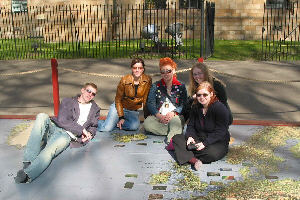
The event was a huge success. Every school managed to perform something special and unique for their country. Each programme was given huge rounds of applause and cheering. We realised how much can be achieved through co-operation and community effort. We not only managed to achieve our aim and have a fantastic festival but to strengthen the relationship between the participants.
Lucia Kákonyi, Project Co-ordinator
Xántus János Idegenforgalmi Gyakorló Középiskola, Budapest, Hungary
Water - the Essence of Life.
Gothenburg 2003-04.
Project report from Gothenburg, 23rd September 2003.
This project year has just started and our work is in progress. So far we have focused upon the natural water cycle and we are about to apply the knowledge we have gained upon the artificial water cycle of Gothenburg. That means that we will learn about how the citizens of Gothenburg are provided with water and what further on happens to it when it is flushed down our toilets. We hope to get an overall view of the water situation in our town.
Other parts of the project that we will work on is the quality of the drinking water, water in lakes, wells and nearby rivers. The examination of the quality will contain chemical as well as biological aspects. We hope to be able to compare results with our partner schools throughout Europe, not only by mail but also through a study visit to Hungary, Budapest. Do we have the same type of water quality, problems and ways of measuring the quality? These are questions that we wish to have answers for in the end of this school year.
Last but not least we will work upon settling of cities and why they are situated where they are. Has it got anything to do with water? This is our main question in this part. Of course we wish to make comparisons and exchange the results with our partner schools.
If you wish to come in contact with us please feel free to send mail to
camilla.jansson@samskolan.se for the first two topics and mikael.hallesand@samskolan.se for the last one.
The Big Adventure
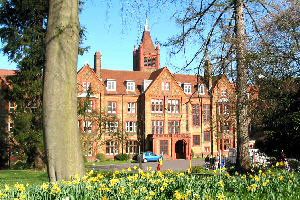
I don’t know if the rest of us had any emotions… I had them! What I am talking about? I speak about our trip to London, when members of staff and pupil from our school, Adam Müller Guttenbrunn, went to London to participate to the "Water Festival".
Why I had these fears? The „Water Festival" was the main event of this of the project "Water: the Essence of Life" and we have prepared a lot of things for this event. Our art and photo collection, which have been selected to participate to the art and photographic exhibition, the water bottles for the water tasting contest, the stage and the puppets for the shadow theatre. And we have been preparing for weeks now…rehearsals, meetings, discussions, ideas, all the difficulties are forgotten now for we are in the plain on the way to London.
Yes, here we were…Seven pupils and three teachers. We had a couple of adventures even here on the plain: missing sandwiches on the plain (some of us remained hungry), some problems with the new Romanian passports, broken water bottles, and wet clothes. We arrived in Bushey in the evening where our new "families" waited for us.
The first day of our visit was dedicated to the St. Margaret’s School, which I have to say impressed us all. Huge buildings, a lot of green, swimming hall, dining room (were we met the English cuisine…the majority of our group voted for the "liquid chicken", only the cowards took the traditional "fish and chips") and not to forget the Great Hall were we had the rehearsals and the "Water Festival".
We had even the first competitions on the first day: the bridge building contest, were our pupils proved to be good engineers, one of our teams won the 1st prize and the water tasting contest, were I personally appreciated the good taste of the Icelandic water. In the evening we went to the "water Music Concert", a found raising concert for the "Water Aid", a good opportunity for R&R.
Next day was a day for rehearsals and for the International Concert. Other events was the Art and Photographic exhibition and the visit to the old roman city St. Albans, a small and lovely city not far away from London (the old street market reminded me of our markets were one of the girls of our group almost got married…and I enjoyed the old Cathedral as well).
The International Concert begun at seven in the evening, each participating school had to present an artistical program but we had a common act as well. Our school chose a play about the water cycle, which had been written by our Headmaster Michael Szellner and one of our teachers Faur Christian, but we had a lot of help from other colleagues (Mihaela Mişca, responsible for the music and Rodica Mustaţă responsible for the sound recordings). In the all together act all the schools had to sing a variety of songs chosen by each participating country (we didn’t imagine that we will sing songs in Icelandic or Swedish). The day ended with the Food tasting, in which each country presented a speciality (the main attraction was the mini concert that took place after the Food tasting were we had a glass of traditional drinks).
The third and fourth day were dedicated to London… Buckingham Palace (some of us were quite taken by the sight, we had some fans of the British royal family in our group), Big Ben, the boat trip on the river Thames, the Tower of London (we were impressed by our guide and by the beauty of the Crown Jewels… unfortunately they were not on sale…), the British Museum, the Docks are just a few of the attractions we visited these two days. I don’t want to forget the musical we went in the evening of our last day in England and the fact that some members of our group got lost with the London cabs.
Emotions…but this time because we had to leave these wonderful places and our adoptive "families" which were so nice with us. We are leaving, but we hope that some day we’ll come back to our new friends and their wonderful country.
Everything is over now, all the difficulties, the good things…just memories, pleasant ones. We arrive in Arad, and all our families and friends expect us and we begin to tell about our BIG ADVENTURE we had in England.
H. Harthandelsinstituut
History and profile
The H. Harthandelsinstituut is a secundary school that was founded in 1929. Originally it was an only-boys school. The aim was to give youngsters in the age bracket 12-18 an appropriate training in all kinds of business-related subjects, so that they could perform well in the local small and medium-sized companies. That is the reason why our school is commonly known as The Commercial School. It offers a broad range of subjects that are important in later business life. Due to the particular political and geographical situation of Belgium, languages are important at all levels of the curriculum. This way the study and practical training of Dutch/ French/ German and English makes up 30% - 50% of the curriculum in some school years. Other subjects are business informatics, economics, accounting and law study. The school has a reputation for discipline, hard-working and professionalism in its study offer.
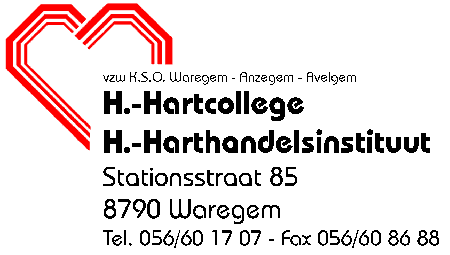
Next to this school, a gymnasium was founded in 1946 . In the curriculum there are majors in science/ math/ modern languages as well as Latin/Greek.
The educational profile of both schools is inspired by the Roman Catholic religion. Students are shown and taught that solidarity, mutual understanding, respect and cooperation are most important values in Life.
The two schools are managed together. They have in total some 1250 students, aged 12-18. Some 30% are girls. Since 1994 the school has set up, or participated in several European exchange projects such as "European Classes" with schools from Sweden, Italy, Finland, The Netherlands, Portugal, Germany. Especially the final secundary years are involved. For the Comenius 1 School Project " WATER, THE ESSENCE OF LIFE" Mr Hugo Delbeke takes up coordination for our school.
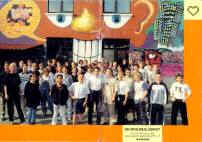
Boarding House
Another typical feature for our school is the boarding house, where 75 students have accommodation during the week. The boarding house offers the students hotel accommodation, but with a home-like atmosphere.
Location
The school is in the center of the thriving Flemish town Waregem (pop: 35 000). Waregem is about 40 km from Bruges and 30 km from Ghent, and some 80 km from Brussels. In Europe it is known for its carpet manufacturing, as 75% of all European tufted and woven carpets are manufactured in this region. But other textile sectors (upholstery, household and wall textiles) are also represented.
More information:
www.collegewaregem.be and hugod@online.be
A visit to Gvendarbrunnar
by Urspring and Breidholt College.
The following text was written by Hanna Guðmundsdóttir, student at Breiðholt College as part of her studies in Natural Sciences at school.
The quality of the drinking water here in Iceland is very high and most Icelanders have always been proud of it. We brag about our water to people from other nationalities but often we do not appreciate it until we are abroad and far away from getting it.
The reasons why the quality of the water as we know it today is so high are many, one is that the security around the water sources is very high. This is of course necessary to keep the quality of the water; no one wants a peace of gum or a cigarette stub in their water.
Another reason for the clean water is that the surrounding lava fields clean any impurities from the water. In fact the water goes straight into distribution without any cleaning or purifying. Furthermore there is no recycling of water by the Reykjavík Water Board.
The quality of the water here in Iceland has not always been this high. It is only about a century ago that the people living in Reykjavík had to go get their everyday water from open wells and springs in and near Reykjavík. At the beginning of the 21st century there were about 34 closed water wells and springs in Reykjavík which shared the job of providing the citizens with water. It was in 1909 that our main water source today, Gvendarbrunnar, began its work. The building of it was then the biggest structure Icelanders had taken on.
In the autumn of 1909 Gvendarbrunnar springs were opened and the citizens of Reykjavík and around the capital finally gained access to clean water and lots of it. In 1900 it is estimated that one citizen used about 8 liters of water but as soon as the water wells were opened in 1909 the number of liters used by one person in Reykjavík and the neighborhood multiplied and soon reached 200 liters a day per person. Today it is estimated that one person in Reykjavík and in the neighborhood uses about 240 liters of water a day, which is one of the highest in the world.
Most of our water that we get from these wells in Heiðmörk is ground water that flows from Bláfjöll and under Húsafellsbruna. The wells themselves are not all as deep therefore are used differently. The wells in Gvendarbrunnar are only about 10 meters deep but in Jaðarsvæði there are wells that are down to 140 meters deep. The watercourse in the wells is very dependent on the weather, e.g. the rain, and rises and falls according to that. Because of this difference the wells in Gvendarbrunnar are only used in the summer and closed in the winter while the wells in the other three areas are used during all seasons. This is done to keep the water from being polluted; the deeper the wells are the less change of pollution.
A „watery" year in Urspring
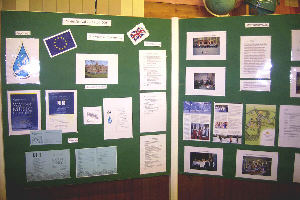
It was a hot and dry summer this year in Germany but nevertheless we had and have a lot to do about water. We were starting with all the preparations for the really wonderful "Waterfestival" in St.Margaret’s School in Bushey. We have to thank you very much, you all did a wonderful job.
During the whole academic year some of our students of 12th grade were doing research work on different aspects of water in a pre university seminar. They worked on water power, research on water pollution in our area, water forming the landscape, mineralwaters, floodings, ... – and they presented their research work on three afternoons to the other students and teachers in July. We were very impressed and so they took part in a big exhibition about our Comenius-Project-work during the last academic year.
The exhibition was opened on the occasion of the visit of the former Prime Minister of Baden-Württemberg, Mr.Lothar Späth, in our school. He was chairman for Jenoptic until July 03.Many former students, parents and local authorities came to hear him and they were having a great evening with the performance of J.W.Goethe’s "Sorcerer’s Apprentice" composed and conducted by Achill Stein and they could view the exhibition about our project and we sold mugs and jam for the "Water Aid" project. So we could collect about 400 € for our common project.
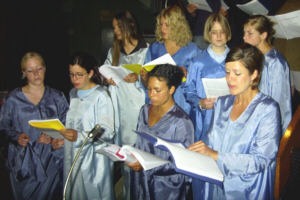
During the summer holidays there was a UNESCO summercamp about water in Urspring and some students and teachers from Urspringschule and St.Margaret’s School took part in it.There were also students and teachers from Israel, Palestine, Jordania, Greece and Cyprus. More than hundred persons worked together about all the different aspects around water and they made excursions to Lake Constance, a mineral water factory and a water work.
There will be a UNESCO workshop on water during the next academic year in Urspring and the group will join the COMENIUS group in supporting the WaterAid project.
We’re also very happy to welcome a new member in our Comenius family, the Heilig Hart Handelsinstitut in Waregem, Belgium. They joined us in August 2003 and we look forward to meet them and to work with them.
The next big event will be a meeting of Hungarian, German and Icelandic students in October (6th – 13th) in Iceland,where they will work together on geographical and scientific topics related to water, especially water energy, using the hot water resources, etc..
This academic year’s main field of the water project will be more on science, geography and the environmental aspects. But we’ll continue to support WaterAid and their project in Tamil Nadu (South India) which was attached to our Comenius Project.
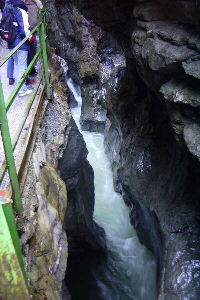 |
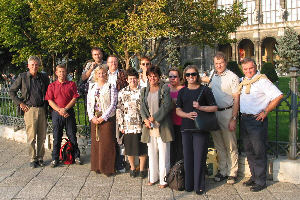
Teacher's meeting Budapest |
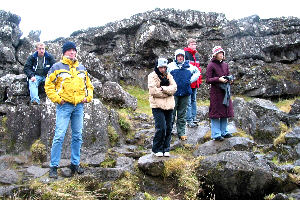
German students in Iceland |
WATER
As the overshadowed clouds fill the greying sky,
We know what’ll happen, we don’t know why,
The rain falls on our faces like tears on our cheeks,
In some places they’ll be praying for water for weeks.
Why is it so important, this H2O?
It seems as if yet it has nothing to show,
No doubt you all know that without it we’d die,
Under the ground beneath falling raindrops we’d lie.
We see it every day yet no second thought give,
That it’s because we drink it that we live,
The rivers, lakes, seas, all made from it,
Water’s significance taken from our minds bit by bit.
This essence of life. This pure blue gold,
With stories of its importance still told,
Jesus walked on water, Noah and the floods,
The liquid that helps seeds turn into buds,
Water flows in the rivers like blood in our veins,
And waters the roses every time it rains,
To imagine a world without it is hard,
It would be as if our only way of living was barred,
Just think for a second, how it’d be,
If dry river and seabeds were all you could see.
In countries like in Africa where it’s really dry,
They are always waiting for rain to leave the sky,
Yet not a grey cloud enters the clear Heaven,
So their strife and worries has no chance to leaven,
That’s what this Socrates project’s about,
All 5 school’s chance to dismiss the doubt,
Of those in the countries that think they will die,
So not as many lives will have to fly by,
Every penny collected goes toward good cause,
Just think for a second, just stop and pause,
What a difference it’d make for all those people,
For the young, the adults, the old and feeble.
By Hannah Capocci 2-4-2003